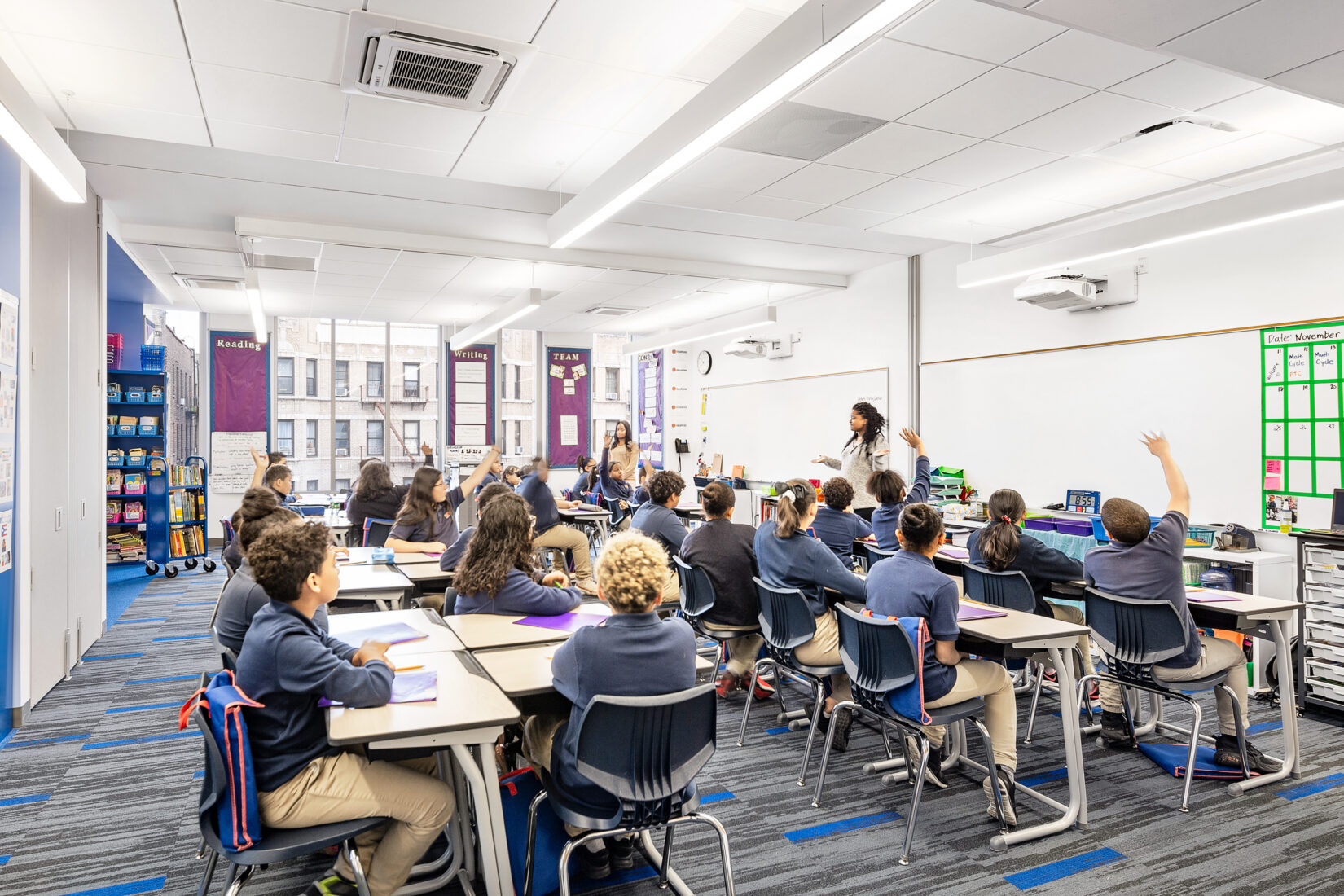Proper acoustics in a classroom is a key factor in a student’s ability to connect with their instructor and environment. As school design and technology continue to evolve maintaining suitable acoustics within classrooms is essential. One way of maintaining consistent acoustic design is through the utilization of design standards and applicable codes. Recently the International Building Code (IBC) has incorporated design requirements for “Enhanced Classroom Acoustics” – Section 1207. Before its inclusion, IBC classroom acoustic criteria had been limited to projects adopting LEED, CHPS, or the ANSI S12.60-2010. Adopting these Enhanced Classroom Acoustics criteria as part of the code broadens the scope to benefit more students. So where do these new design requirements apply and what do they entail?
Design Metrics:
These new design requirements apply to any classroom space sized up to 20,000 ft3 with 6 or more occupants at any one time. This encompasses most typical classrooms spaces. The design metrics include reverberation time and ambient sound level. How do reverberation time and ambient sound level influence classroom acoustics?
Reverberation time (RT) is an acoustic metric that determines how long it takes for sound to decay within a space. This is generally described as how “lively – resonant” or “dead” a space is. Reverberation time is a critical component in speech intelligibility controlling the amount of direct sound (sound coming directly from the instructor to the student) vs. reflected sound (indirect sound reflecting off walls, floor, and ceiling to the student).
Reverberation time is controlled by the types of finishes within a space like acoustic ceiling tiles, carpet, furnishings, etc. If a space is too reverberant speech ineligibility is reduced. Having good speech intelligibility within a room is essential for students to understand their instructors.
Ambient sound level is the steady-state (non-fluctuating) background noise level within a space. This consists of interior building system noise (i.e. HVAC noise) and exterior noise (i.e. traffic and exterior mechanical equipment noise). Ambient background noise is defined in decibels and evaluates both how the human ear perceives loudness at different pitches and low-frequency noise sources such as mechanical equipment or aircraft flyovers that operate at high noise levels. Ambient background noise is defined in A-weighted decibels (dBA) and C-weighted decibels (dBC) level. A-weighted sound levels correspond closest with how the human ear perceives loudness at different frequencies (pitches) with corrections at lower (bass) and high (treble) frequencies. C-weighted sound level does not correct for low-frequencies and is designed more for evaluating low-frequency noise sources such as mechanical equipment or aircraft flyovers operating at high noise levels.
Ambient background noise is controlled through mechanical noise mitigation strategies such as vibration isolation, duct silencers, or equipment placement and exterior façade design like roof structure, exterior wall, and window compositions. Noise affects how much vocal effort is required for an instructor to efficiently address their students. Both the interior room acoustics and ambient noise levels play a critical role in speech intelligibility within a space.
Effects on Future Design:
If your future project is in a location where the new IBC standards have been adopted or you are looking to future proof your current project the following design & analysis may be required for proof of compliance:
– Exterior Noise Survey – Measurement(s) to determine the existing traffic noise levels from planes, trains, automobiles, etc. at the project site.
– Exterior Façade Analysis – Based on the existing exterior noise levels at the project site, acoustical upgrades to the exterior façade composition (exterior wall, window, roof assemblies) may be required. Review and proper specification of exterior façade components are needed to reduce noise to the required ambient sound levels. IBC does not specify if empirical or calculated methods are required for proof of compliance. Required methods for proof of compliance should be confirmed with your local code official.
– Acoustic Treatment – There are two options available for submission of room acoustics compliance.
> Option 1: Prescriptive method. This method consists of calculating the room reverberation time based on the acoustic performance of the selected room’s finishes.
> Option 2: Performance method. This method consists of measuring the finished room reverberation time for each fully furnished unoccupied space.
– Mechanical Noise & Vibration Analysis – This analysis consists of reviewing applicable mechanical equipment sound data and transmissions paths (rooftop noise through the roof structure, supply & return air noise, vibration isolation selection, etc.). IBC does not specify if empirical or calculated methods are required for proof of compliance. Required methods for proof of compliance should be confirmed with your local code official.
Moving Forward:
The incorporation of new codes can be a challenge when designing a new project. Thankfully, experienced professionals can navigate these design parameters to not only help meet your project goals and desires but avoid costly design mistakes that may need to be remediated to meet the current code. SM&W provides a broad depth of experience and knowledge ranging from modern to contemporary school design to rewriting and updating school system acoustic design standards. We hope this update has provided you with new valuable insight. If you have any design questions or concerns on a future or current project, please reach out to us. We’d be happy to help guide you through your next school project.
Photo Credit: Alexander Severin
